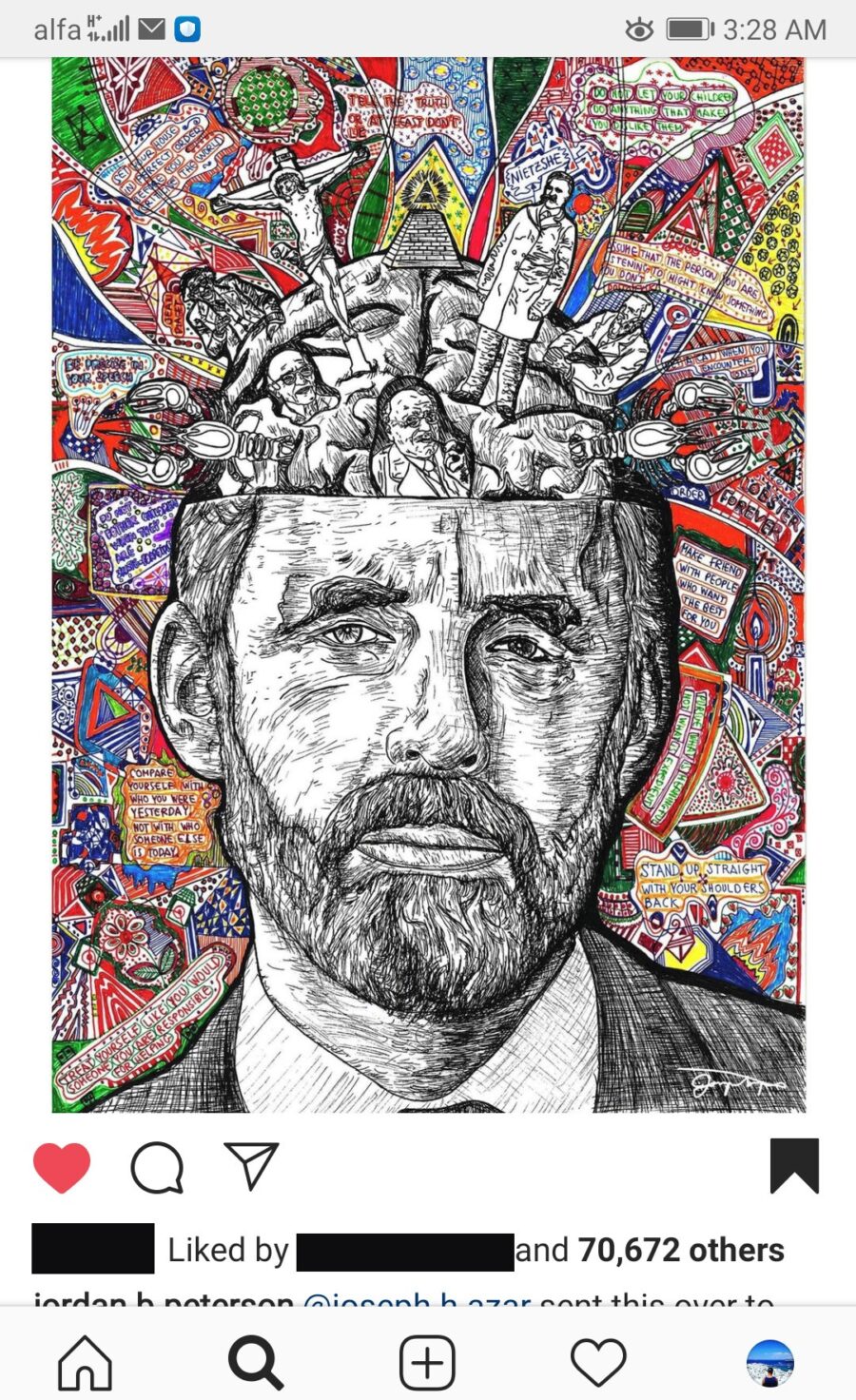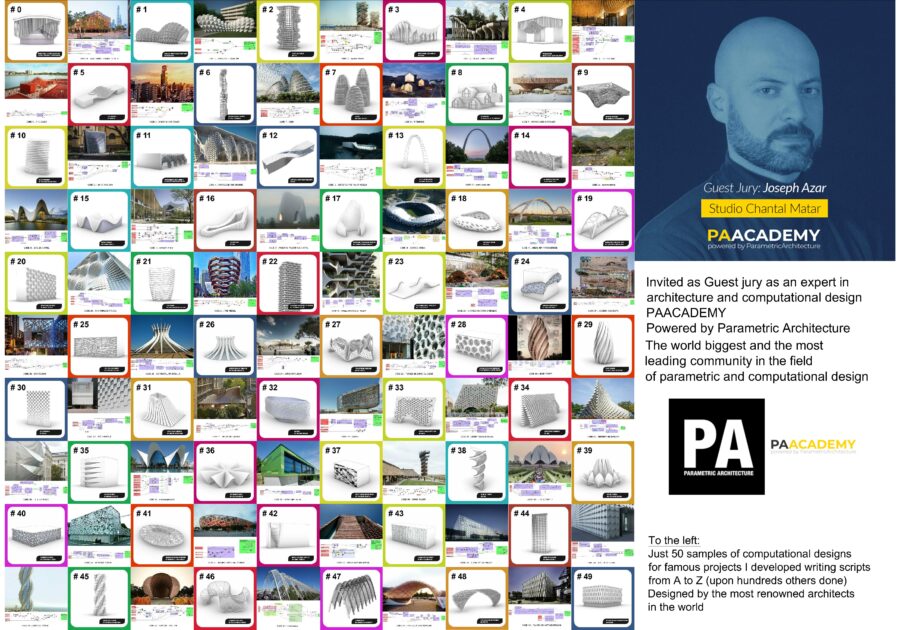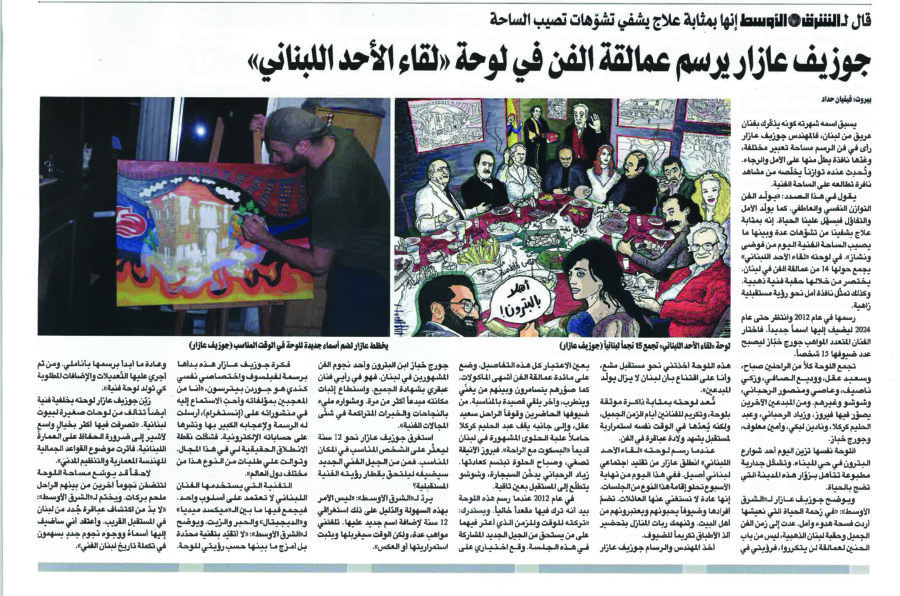“The Illusion of Value: What It Feels Like After Working on 50+ Architecture Projects and Selling My Art in 50+ Countries – Fulfillment vs. Profit”
How can we balance the meaningful with the financially rewarding?
BY JOSEPH AZAR
April 2025

Throughout my career, I have observed a strange paradox—there is often no direct correlation between the value of what one creates and the money one earns from it. People assume that the most innovative, groundbreaking work should yield the highest financial return, but reality proves otherwise. Sometimes, an effortless or even meaningless project can generate immense wealth, while an outstanding creation that reshapes an industry or introduces a new language into the arts might struggle to make a fraction of that amount.
I have experienced this firsthand in my professional life. In architecture, I have worked on numerous projects that lacked any real creativity. Clients often arrive with rigid expectations, requesting homes or buildings in specific styles that follow conventional norms. My role in these cases was simply to execute their vision rather than explore new possibilities. These projects, while creatively unfulfilling, were highly profitable—because they aligned with market demand and catered to the financial elite willing to pay to see their dreams materialized.

On the other hand, I have also created few artworks that reached global audiences, including my Jordan Peterson drawing and the Lebanese Legends installation in Batroun. These works were not just artistic expressions—they were breakthroughs, introducing new artistic language or deep meaning that resonated with people and sometimes worldwide. They were featured in magazines and newspapers, gaining significant recognition, yet despite their cultural impact, the financial returns from selling prints and artworks were nowhere near what I made from standard architectural projects for wealthy clients.
Adding to this paradox, I also collaborated with some major enterprises on large-scale projects. These opportunities generated substantial income, yet it turned out to be one of the worst times of my life in some cases. The bureaucracy, the rigid corporate structures, and the lack of creative freedom drained me. Despite making more money than I had ever earned before, I felt completely disconnected from my work. The experience reinforced a hard truth: financial success does not always equate to happiness or fulfillment. In fact, it can sometimes come at the cost of one’s well-being.

Reflecting further, I recall when sometimes completing repetitive, uninspired tasks just to earn a paycheck. The work had no real meaning to me, but it provided financial stability. At times, I even found myself making money doing completely absurd, nonsensical tasks—things that held no value except for the fact that someone was willing to pay for them. This, ironically, is the kind of work AI could easily replace—tasks devoid of creativity or deep thought, focused only on efficiency and profit. But in a world where AI takes over such roles, the question remains: How does one find a way to survive while still engaging in meaningful work? If in some cases the easiest way to make money is to do things without intrinsic value, then where does that leave those who aspire to create something profound?
This paradox does not apply solely to the contrast between architecture and art. It happens across industries. There are architects pushing the boundaries of sustainable design and innovative structures, yet their financial reward pales in comparison to those who simply replicate past trends to satisfy market demand. Conversely, in the art world, some artists create uninspired, commercial work and make millions—not because of its artistic value but because they have the right connections, marketing strategies, or commercial appeal. A shallow, market-driven artwork can sell for more than a profound, deeply intellectual creation and more power to them, but it is worth noting.
 Another example of fulfillment beyond financial reward comes from my recent experience teaching at a university or being invited as an architect guest jury. While these roles do not pay nearly as much as some normal small architectural commissions, they provide an incredible sense of satisfaction. Engaging with students, challenging their perspectives, and witnessing their growth is a reward that cannot be measured in monetary terms. The intellectual exchange, the excitement of inspiring young designers, and the sense of contributing to the future of the industry make these experiences deeply fulfilling.
Another example of fulfillment beyond financial reward comes from my recent experience teaching at a university or being invited as an architect guest jury. While these roles do not pay nearly as much as some normal small architectural commissions, they provide an incredible sense of satisfaction. Engaging with students, challenging their perspectives, and witnessing their growth is a reward that cannot be measured in monetary terms. The intellectual exchange, the excitement of inspiring young designers, and the sense of contributing to the future of the industry make these experiences deeply fulfilling.
This raises a fundamental question: Should one prioritize financial success or personal fulfillment? It is tempting to chase after financial security, but true satisfaction comes from knowing that one’s work has meaning and impact. There is an immense sense of fulfillment in seeing my drawings displayed in homes around the world, knowing that they resonate with people. In contrast, making a large sum of money from a project that lacks originality feels empty.
The truth is the world does not always reward what is most valuable with wealth. Financial success often follows trends, marketability, and accessibility rather than artistic or intellectual merit.
The most meaningful creations may not generate millions, but they offer something far greater: legacy, influence, and the ability to inspire others.

So, is it possible to strike a balance? Passion alone does not sustain a career, but neither does money without a sense of purpose.
The real challenge is in integrating meaningful work with financial success—finding ways to create something valuable while ensuring it sustains you.
Perhaps the answer is not in choosing between fulfillment and money but in crafting a path that embraces both.
For those in creative fields, it means strategically navigating opportunities that allow for innovation while maintaining financial stability. It could mean leveraging artistic influence into sustainable business strategies, finding new ways to monetize valuable work, or even challenging the very systems that dictate what is commercially viable.
I invite you to reflect on your own pursuits. How can you balance the meaningful with the financially rewarding? Can you shape your career in a way that satisfies both?
The challenge is not to abandon one for the other but to bridge the gap between them. That, perhaps, is the real art of life.

Artist/Architect/ LEED AP (BD+C)
Computational/ Environmental design
Enjoyed this article? Discover more in the Blog section